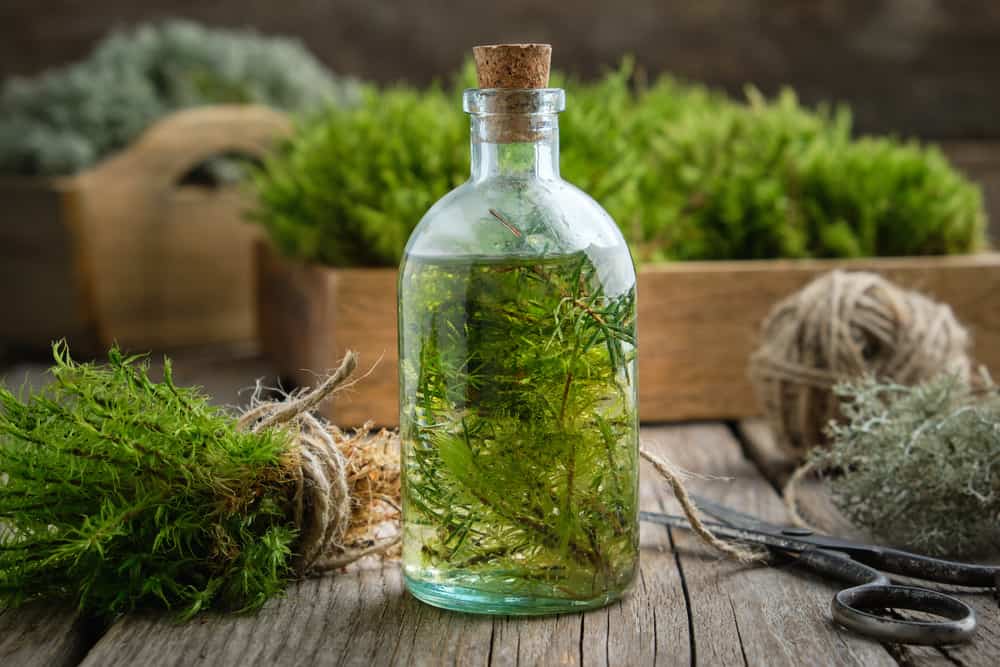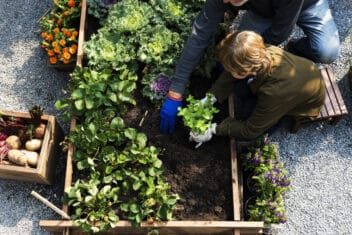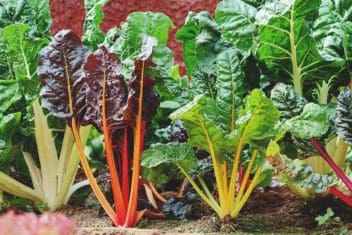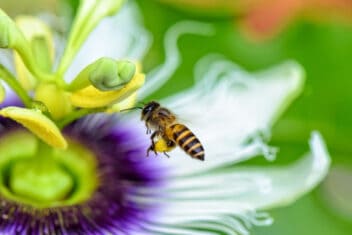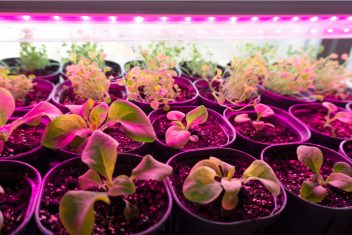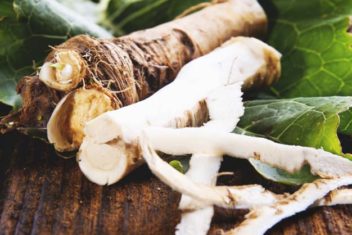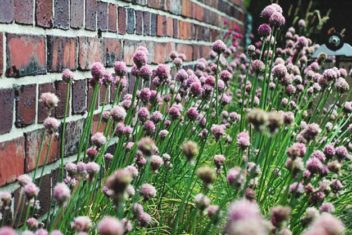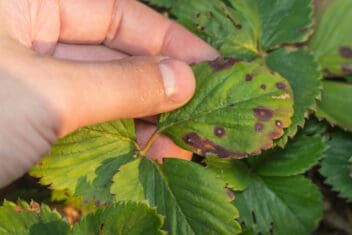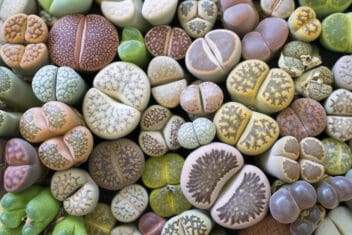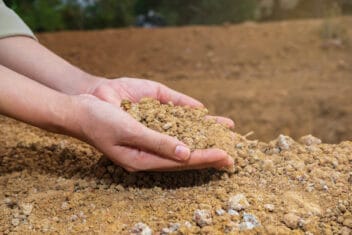Plants that are multi-purpose are worth their weight in gold. If you have limited space and are trying to grow as much food and medicine as possible, all while adding beauty to the garden, then growing species that are edible and medicinal as well as beautiful to look at is key.
Below are 23 species that fall into at least two of these categories, if not all three.

Vegetables, Grains, and Culinary Herbs
Do you have a thriving vegetable garden? Then chances are you have some fabulous medicinal plants in there. Many people don’t realize that a lot of common vegetables, grains, and culinary herbs also have several medicinal effects as well. Check out what the following can offer you:
1. Corn (Zea mays)

That gloriously soft, beautiful silk you’ll find wrapped around corn cobs also has wonderfully medicinal properties. For example, an infusion (tea) made out of the fresh silk is ideal for treating urinary tract infections and cystitis. In fact, North American First peoples have used tea made with corn silk and kinnikinnick (Arctostaphylos uva-ursi) leaves for thousands of years.
Studies show that corn silk tea can lower blood sugar levels. When combined with marshmallow root (Althaea officinalis), it can also alleviate the pain and inflammation associated with passing kidney stones.
2. Cayenne peppers (Capsicum annuum)
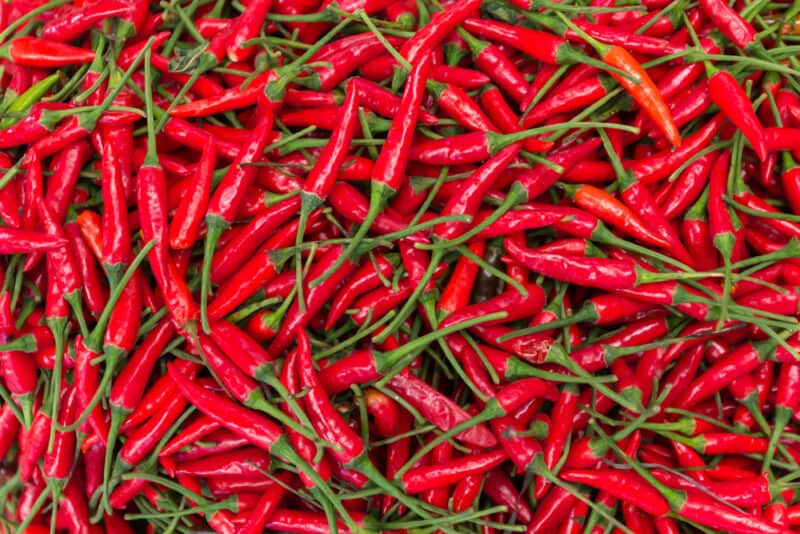
If you’ve ever tasted cayenne pepper, you’re probably familiar with how fiery they are. Their heat is due to their capsaicin content, which has noted analgesic properties. If you have arthritis in your hands, consider making a warming arnica and cayenne pepper salve to alleviate the pain and swelling.
In addition to their painkilling effects, cayenne peppers are stimulating and anti-inflammatory. They may help to reduce and prevent different types of cancer, can reduce blood clots, and lower blood pressure.
3. Garlic (Allium sativum)
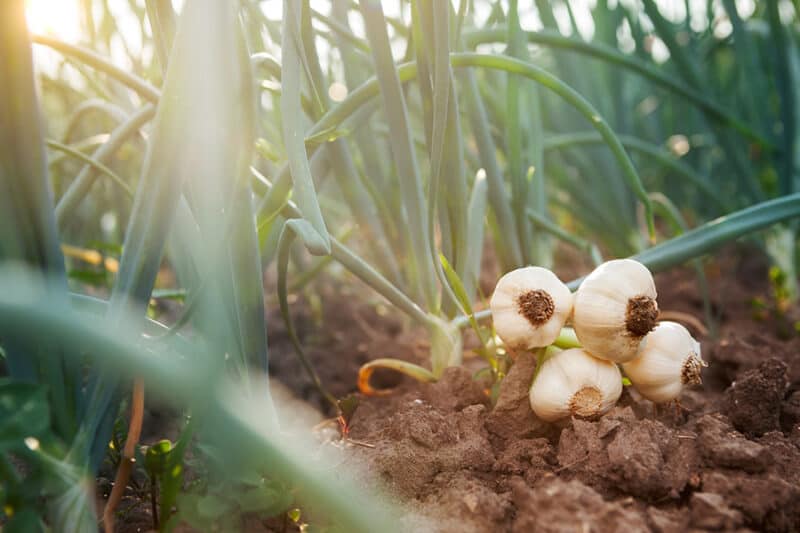
Surprised that garlic is a multi-purpose plant? Don’t be.
If you’re growing garlic, then you’re cultivating one of the most powerful antibiotic, antimicrobial, antifungal, and antioxidant plants on the planet. People have used garlic medicinally for thousands of years, both externally for wounds and skin infections, as well as internally for a number of other ailments.
When eaten, this humble bulb boosts the immune system, improves cardiovascular health, helps to kill off parasites, and can help to fight off certain cancers, as a recent study found. When used topically, it can eliminate fungal infections such as athlete’s foot and candida/thrush, and help to heal suppurating wounds.
4. Oats (Avena sativa)
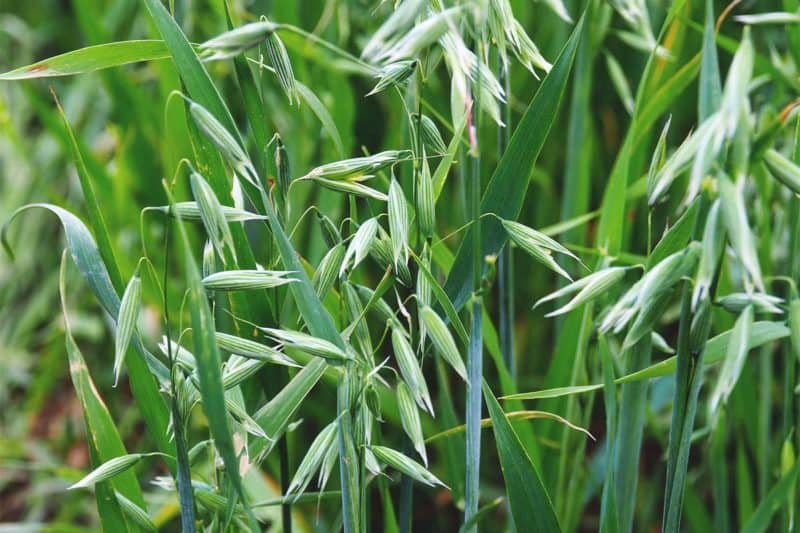
If you’re feeling anxious, depressed, or otherwise depleted, then milky oats might be just right for you. These grains are easy to grow and provide wonderful nervine support to restore nervous system function. They have a soft sedative effect and are gentle enough for people of all ages.
In mid to late spring or early summer, depending on your growing zone, pinch the oat seed heads to see if they excrete a “milky” substance. This is the latex that is so vital for nervous system support. There’s only a small window to harvest these beauties, so you’ll have to act quickly.
Prepare these milky oats as a tea or tincture, or pop them into a muslin sachet to use as a relaxing bath soak.
5. Onion (Allium cepa)
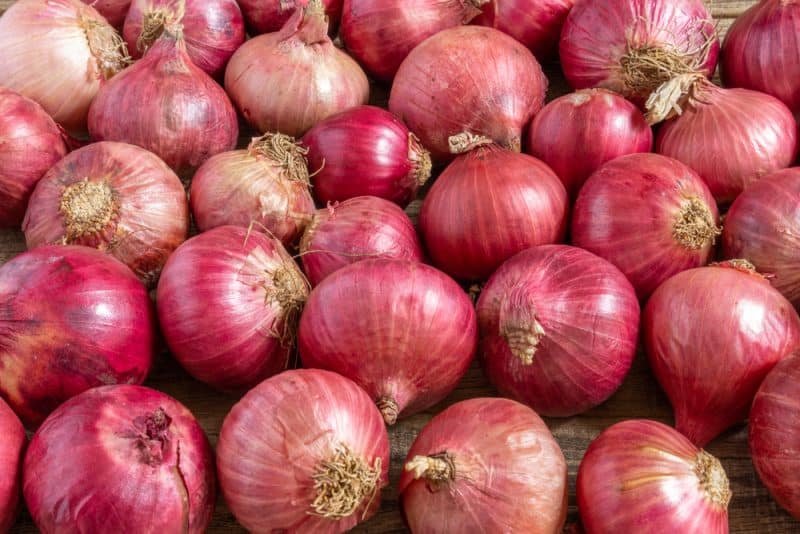
Onions, like garlic, have numerous antibiotic and antibacterial properties. Some varieties (namely red onions) also have significant antispasmodic effects. If you’re dealing with the kind of body-shaking coughs that won’t let you sleep, then put together a batch of onion syrup.
Mince or thinly slice about one cup of onions and toss with a couple of tablespoons of Monarda or thyme (fresh or dried). Kiva Rose’s recipe above suggests creating this mixture in a jar and adding enough honey to cover everything. My grandmother’s recipe involved creating three layers with honey added in between. Ultimately, go with your own instinct.
Then cover, leave on the counter overnight or for about 12 hours, and take spoonfuls of it as needed.
6. Sage (Salvia officinalis)

The same standard garden sage that people use to flavor their poultry stuffing just happens to be a potent antiviral as well. In fact, scientists tout it as having extraordinary effects on a variety of current viral infections. It’s a versatile herb that grows well just about anywhere and is a must-have for the medicinal herb garden.
It can be either warming or cooling depending on the person taking it and has drying/astringent effects. This makes it ideal for helping to clear out mucus, as well as reducing edema. Additionally, it can balance female hormones, alleviate hot flashes during menopause, and heal urinary tract issues.
Fruit Trees, Bushes, and Vines
You may be delighted to find out that some of the bushes and trees you’ve planted as food sources also have a slew of medicinal properties.
7. Wild Cherry (Prunus serotina)
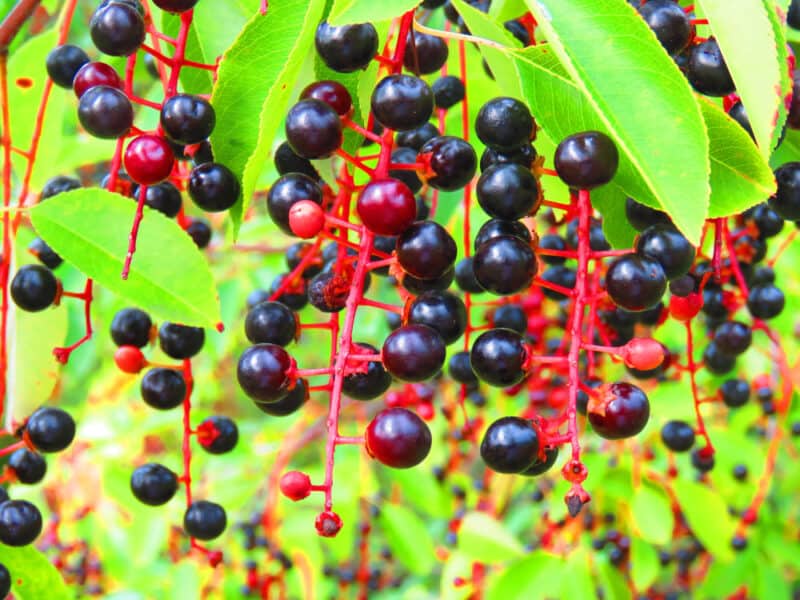
Wild cherry isn’t as common as domesticated varieties, but it has beautiful, fragrant blossoms that cascade across lawns every spring. Its bark, flowers, and leaves all have strong nervine effects and are ideal for soothing overwhelming tension and anxiety. It can calm one from having a full-on hysterical meltdown and soothe the “hot” anger that might otherwise result in a chair being thrown through a window.
It increases circulation, eases heart palpitations, and can calm anxiety-related IBS. Some people use it to reduce gut inflammation due to celiac or Crohn’s disease, and its anti-inflammatory properties can also alleviate menopause-related hot flashes, and heat-related to hormonal fluctuations.
8. Elderberry (Sambucus nigra, Sambucus canadensis)
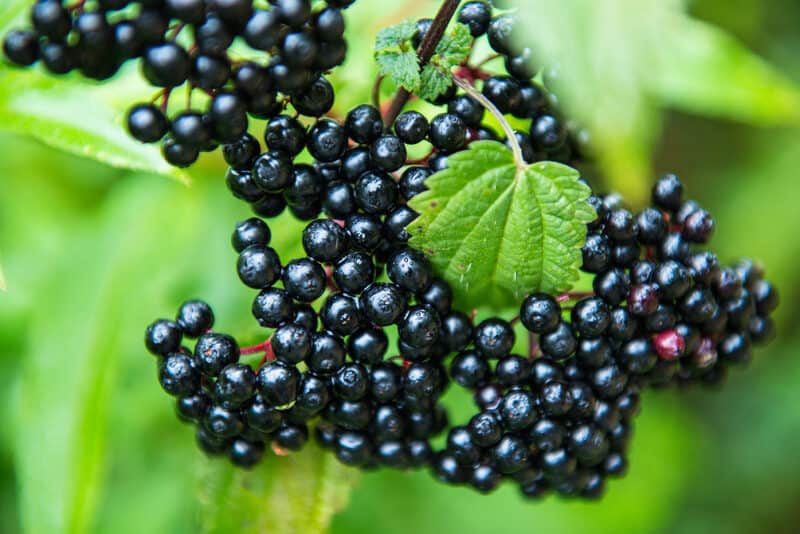
If you’ve ever had elderberry wine or jelly, then you know how intoxicatingly delicious these berries can be. But did you know that they also have incredible anti-viral properties? Yep, elderberries are a marvelous multi-purpose plant.
A 2014 study showed that black elderberry (Sambucus nigra) was capable of rendering viral bronchitis non-infectious, and inhibited the viral cells from multiplying within the body.
9. Passionflower (Passiflora incarnata)

This stunning vine is a mainstay in decorative gardens, but it’s downright sacred for its nervine properties. In fact, its anxiolytic components are so effective at treating anxiety and insomnia that studies show it to be as effective as benzodiazepines.
10. Peach (Prunus persica)
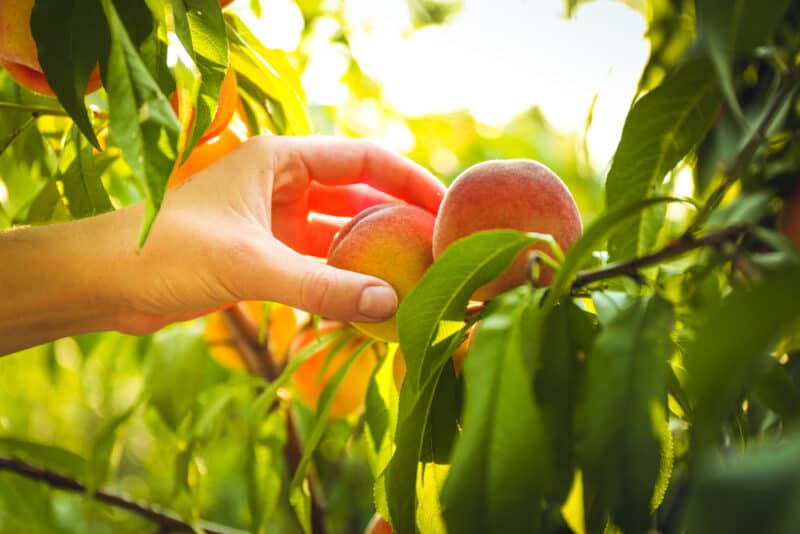
You might grow peaches as delicious snacks, but did you know that this tree’s twigs, bark, flowers, and leaves have remarkable healing properties? Their effects are cooling, moistening, balancing, and neuroprotective, and can be used for a wide range of physical and emotional concerns.
Its relaxant nervine properties are ideal for treating anxiety and “brittleness,” especially when people feel overwhelmed or stretched too thin. It can alleviate nausea and morning sickness and can ease the sting or itch of “hot” insect bites.
This is a go-to for me whenever fire ants bite me, for example. I also used it to treat a brown recluse bite on my hand, but that’s a story for another day.
11. Red raspberry (Rubus idaeus)
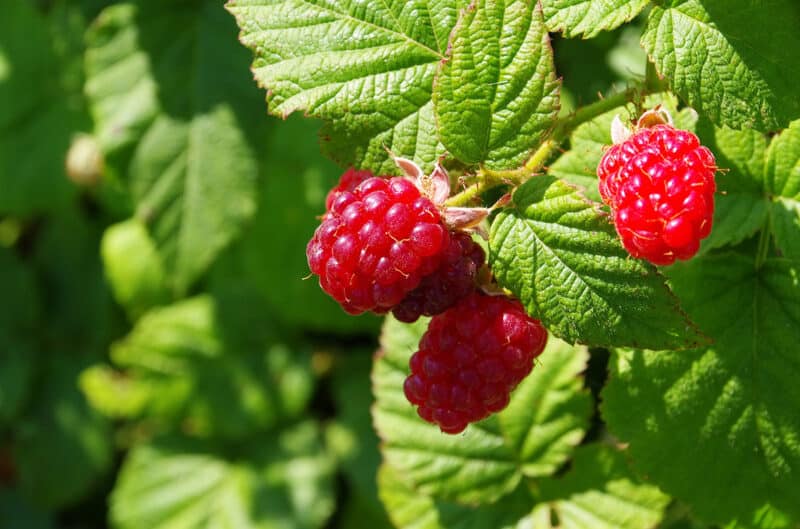
Not only are these luscious red berries amazing in jams and jellies, but the leaves are also pretty much invaluable as food and medicine.
While the leaves are fuzzy and not particularly tasty to eat, they’re packed with iron, phosphorus, potassium, and vitamin C. You can add them to bone broth to take advantage of these nutrients, or brew them into a lovely-tasting tea.
Furthermore, these leaves have notable anti-inflammatory and sedative effects. People also use them to alleviate the cramping and pain associated with menstruation for centuries, and can also soothe gut colic. Additionally, they’re mild astringents and can help ease diarrhea, UTIs, and cystitis.
Next time you tuck into a bowl full of raspberries, don’t forget that this is an extremely useful multi-purpose plant.
Ornamental Plants, Trees, and Shrubs
Yep, those ornamental species that you planted for their beauty can also be beneficial medicinally. You might already have several of these in your yard.
12. Bee Balm (Monarda spp.)
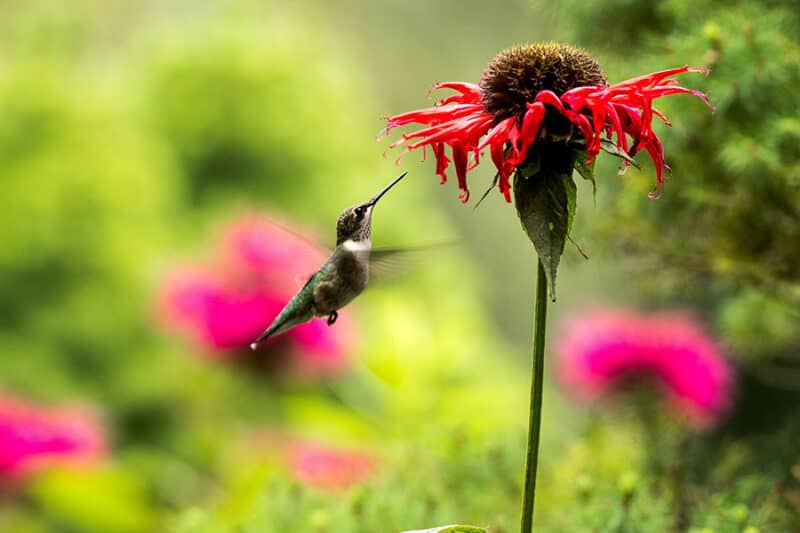
Many people grow bee balm to attract beneficial pollinators to their garden, but Monarda species are also startlingly powerful medicinals. It can be both warming or cooling, and stimulating or relaxing, depending on the person and how the herb is being used.
Its high thymol content makes it a potent antibacterial and anti-fungal. This makes it ideal for treating yeast infections, mild blood poisoning, gut issues caused by E. coli and similar bacteria, upper respiratory infections, sinus infections, and even strep throat, as studies show. While the latter often requires standard antibiotics to eliminate it, Monarda can keep the worst of the infection at bay until you can seek medical treatment (or if there are none available to you).
13. Hawthorn (Crataegus spp.)
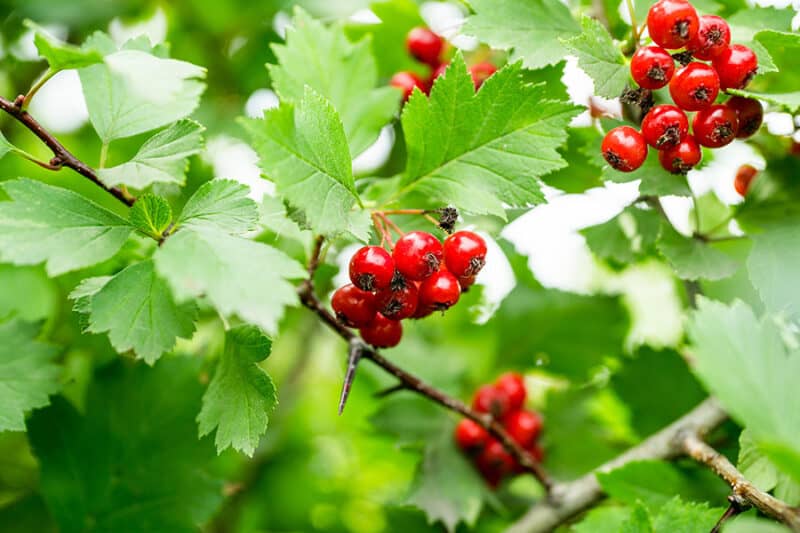
Growers often use these beautiful multi-purpose plants as hedges because they are resplendent in shades of white and pink. In addition to being lovely to look at, you can use their bark and berries to regulate heart rate and to strengthen the cardiovascular system in general.
Their sedative components can also help to soothe menopausal symptoms, ease migraines and insomnia, and lower high blood pressure, as a group of scientists found and published in the journal Molecules.
14. Peony (Paeonia lactiflora)

White peony root is vital in Traditional Chinese Medicine (TCM), where it’s known as Baishao and is most commonly used to treat liver inflammation, gut spasms, PMS, irritability, and anxiety. It has noted anti-spasmodic, carminative, nervine, analgesic, and anti-inflammatory effects, and has been used to treat countless issues for thousands of years.
In TCM, it’s often combined with Bupleurum chinense—called Chaihu—to create a formula known as Chaihu-Baishao. This has been shown to work extraordinarily well for treating depression. Note that Paeonia spp. should only be used with the guidance and supervision of a naturopathic doctor, TCM practitioner, or experienced herbalist.
15. Roses (Rosa spp.)
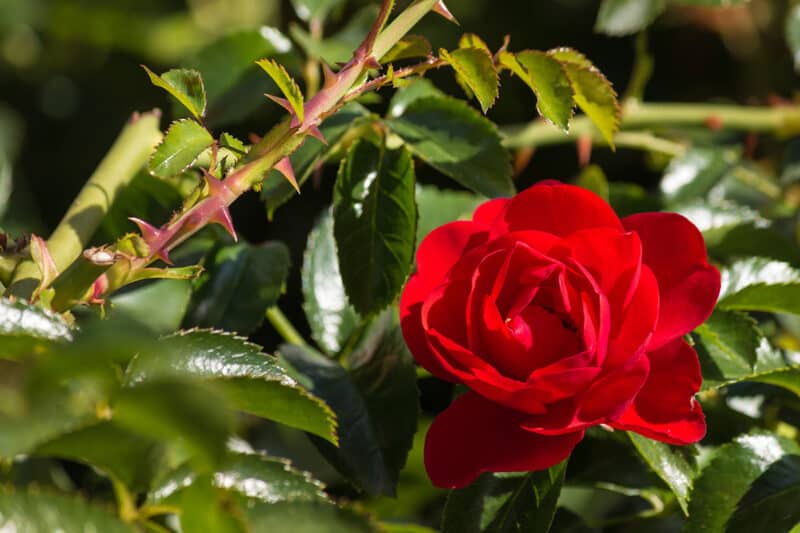
One of the most famous of the multi-purpose plants, all roses have numerous healing qualities, and their petals and hips are edible as well! Used topically, anti-inflammatory rose water or infused oil can reduce redness or swelling due to rosacea or acne. When taken as tea, its antidepressant properties can uplift the mood exponentially.
Roses also have mild sedative and antispasmodic properties, so rose petal tea can be helpful in reducing menstrual cramps, as well as digestive colic associated with celiac and/or Crohn’s disease.
16. Violets (Viola spp.)
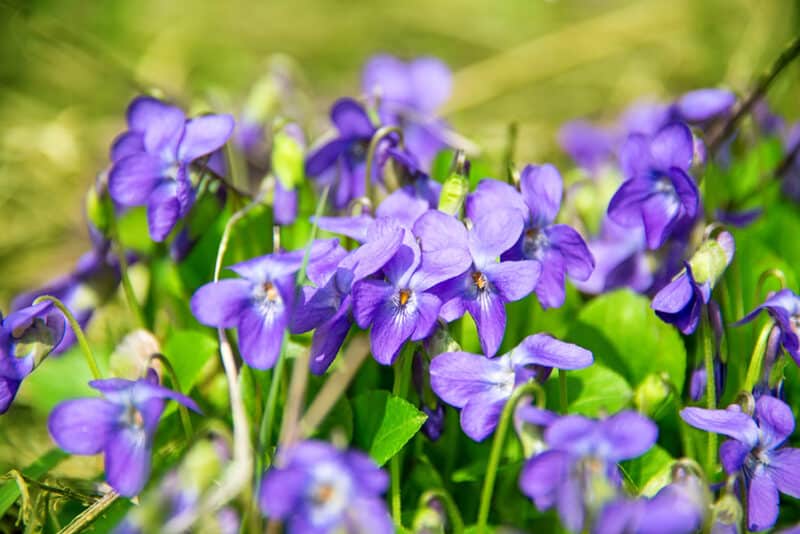
Violets—and their cousins, violas, and heartsease—are often used as decorative groundcover. They’re excellent lawn alternatives, especially in areas that receive dappled shade rather than full sun. All of these plants have wonderful medicinal properties, and they just happen to be edible too!
Try making violet jelly, or adorn baked goods with candied violets. The young, tender leaves are delicious salad herbs, while you can add older leaves to soups. As for their medicinal uses, these are cooling, moistening (demulcent) plants that work well for “hot” conditions. A fresh poultice can alleviate discomfort from burns, boils, and eczema, while syrups and infusions may offer relief and expectorant support for sore throats and bronchitis.
17. Witch Hazel (Hamamelis virginiana)

This beautiful multi-purpose ornamental plant is hardy, deer-resistant, and produces beautiful bright yellow flowers. It also has brilliant medicinal properties. The leaves, bark, and twigs have antibacterial and anti-inflammatory properties and are often incorporated into skincare products. The extract is used as a skin toner and can be used to treat ear infections, acne, boils, and insect bites.
Its cooling, astringent, and anti-inflammatory properties make it ideal in a compress for treating hemorrhoids. Some midwives also recommend compresses of this extract to soothe and heal the perineum after natural childbirth.
18. White Willow (Salix alba)
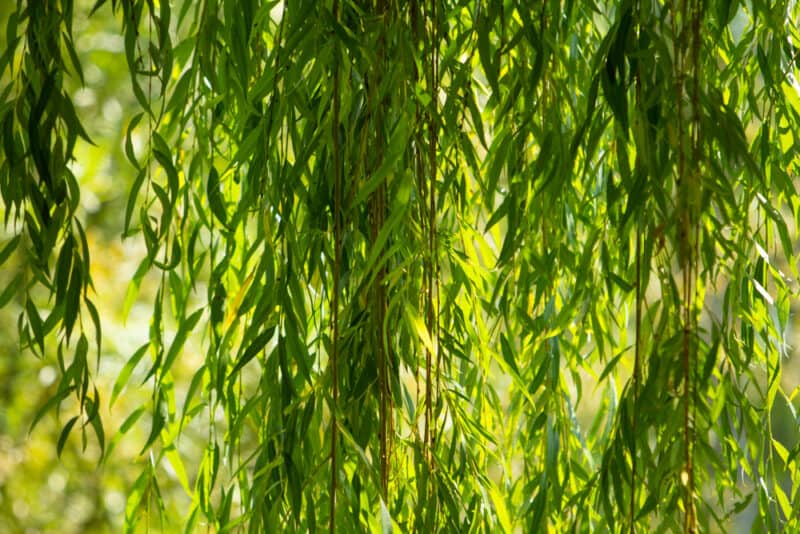
Behold the original natural pain reliever. White willow’s inner bark and cambium layers are rich in salicylic acid, which has anti-inflammatory, analgesic (painkilling), and antipyretic (fever-reducing) properties. It’s this salicylic acid that people isolated and refined into acetylsalicylic acid, as Aspirin tablets.
Not only are these willow trees beautiful, but they’re also abundant sources of potential pain-relieving properties. Additionally, you can use their whips to weave baskets, and as lattices for tomatoes and other climbing plants.
19. Juniper (Juniperus spp.)
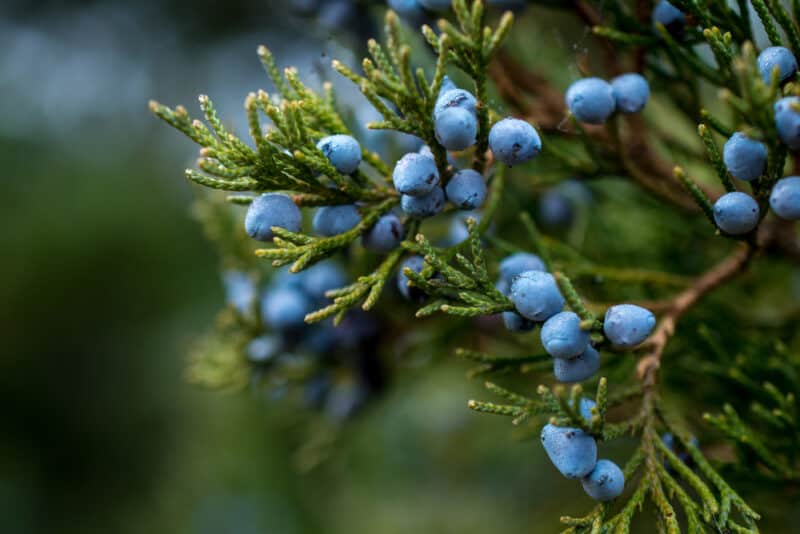
Junipers are a stellar option for arid gardens because they don’t mind drought one little bit. But they do equally as well in other types of conditions, as well, which is why this is one of the most popular ornamentals in the US. But surprise! Most juniper species are also effective medicines.
Native Americans have relied on junipers for hundreds of years for a massive range of purposes. Today, studies have confirmed that the genus is an effective nutraceutical.
The bark, cones (sometimes called berries), and leaves can all be used medicinally. The leaves can also be made into a flavorful tea and the cones are edible. Think gin or lox. Talk about your multi-purpose plant!
20. Purple Coneflower (Echinacea spp.)
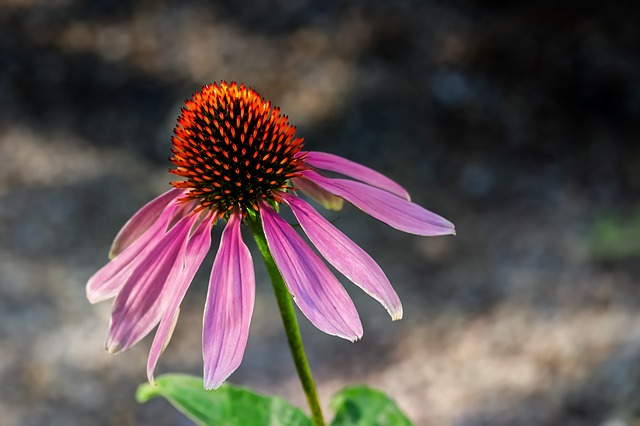
Everyone has heard of echinacea to treat colds and science has shown that it’s true that the plant may help lessen the duration of illness.
Plus, they’re undeniably beautiful in the garden, right? Plus, the flower and roots are also edible (as are the leaves, but they tend to be tough and hairy). It’s truly a multi-purpose plant!
Cover Crops
Gardeners often sow these plants to replenish depleted soils. Typically, they broadcast the seeds over fields that will lie fallow that season and then mow them when partly mature. As they decompose, they’ll deposit nitrogen, phosphorous, and other vital nutrients into the earth beneath. This is known as “green manure” and is an excellent way to revitalize depleted areas.
That said, many cover crop plants also have medicinal properties. If you’re sowing any of them as green manure, consider gathering a basketful to replenish your apothecary cabinet as well.
21. Comfrey (Symphytum officinale)
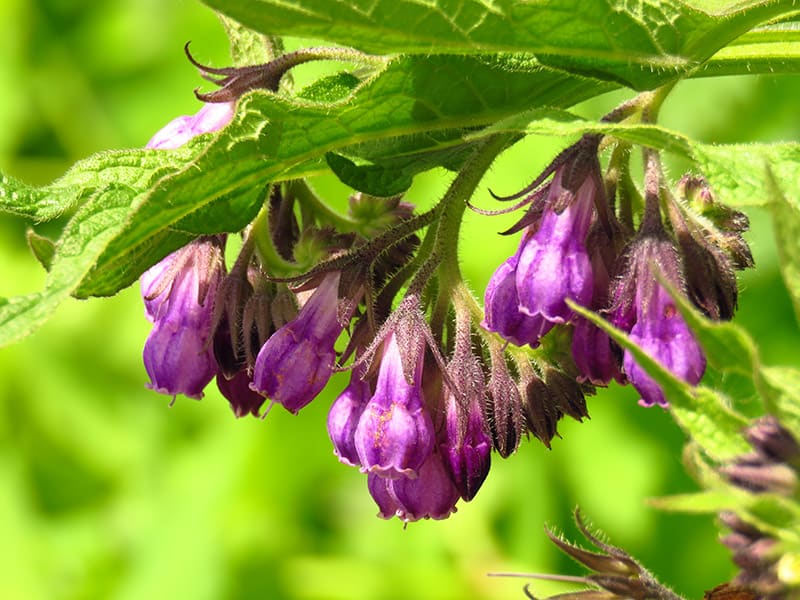
Many people sow comfrey to help break up dense soils and replenish nutrients, but this multi-purpose plant has a long history as an effective medicinal as well.
Topically, comfrey poultices and compresses do wonders to alleviate joint pain, especially due to rheumatoid or osteoarthritis. Studies show these applications can also help to speed bone healing, and reduce pain, bruising, and swelling after injuries.
Whether comfrey is edible or not is currently under debate. Some believe that it’s perfectly safe, while others believe that it’s too toxic for the liver to handle. Additionally, many people accidentally poison themselves by accidentally consuming similar-looking foxglove leaves, thinking they’re comfrey.
Your best bet is to save it for topical applications.
22. Dandelions (Taraxacum spp.)
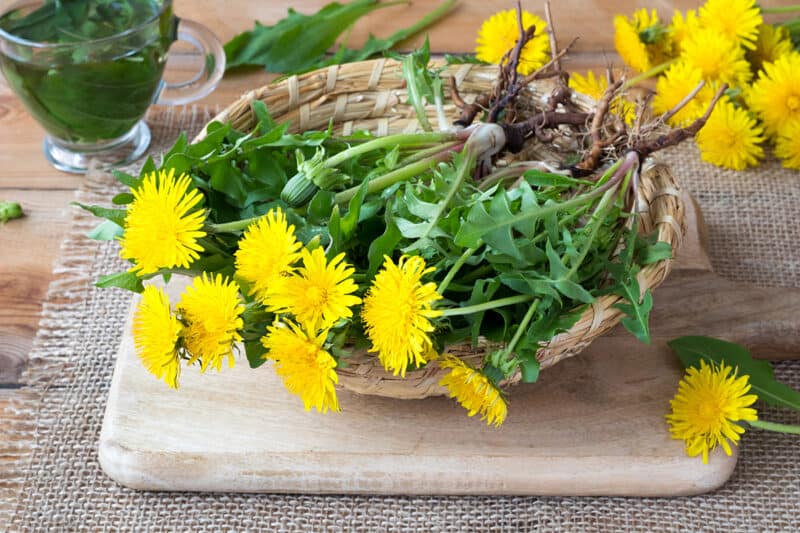
Like comfrey, people often sow dandelions intentionally in compacted, clay-rich soils. Their long taproots are ideal for breaking up soil, allowing it to aerate as well as draw up water. In addition to making great cover crops, dandelions are nutrient-dense wild vegetables, and invaluable medicinal allies.
Every part of this plant is edible. You can eat the iron-rich leaves raw or sauteed with garlic and olive oil. They help to combat anemia if taken as a tea, and will also flush toxins out of the liver and kidneys. Root tea is used to treat liver issues such as jaundice, cirrhosis, and hepatitis, and the whole plant has anti-inflammatory properties.
23. Red Clover (Trifolium pratense)
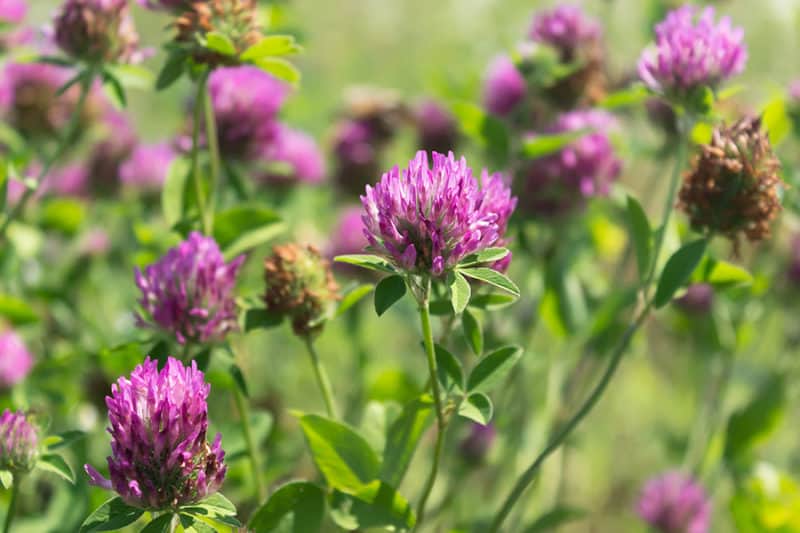
This pretty little flower is a member of the legume family and is often sown to help replenish soil’s nitrogen levels. It’s also extraordinarily medicinal. Red clover has been proven to alleviate hot flashes and night sweats in menopausal women, and it can be used topically to treat eczema and psoriasis.
It contains anti-inflammatory and analgesic properties (eugenol, myricetin, and salicylic acid), which can alleviate pain and reduce swelling.
A Word of Caution:
As always, do thorough research before eating plants or using any plant parts medicinally. Make sure you’ve identified the plant correctly, and that taking them as medicinal preparations will be safe for you. While all of these multi-purpose plants are deemed generally safe, they may not be ideal for everyone.
Consult your healthcare practitioner beforehand to determine whether these plants might trigger any allergies, or if their active components could contraindicate with medications you’re currently on.
Additionally, pregnant or lactating women should be especially diligent when taking certain plant medicines. Some can initiate uterine contractions, resulting in miscarriage, while others may pass through breast milk to the nursing infant. Use these herbal medicines responsibly, and if in doubt, consult with a herbalist or naturopathic doctor before taking anything.
